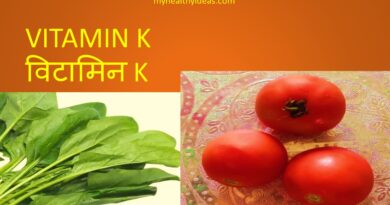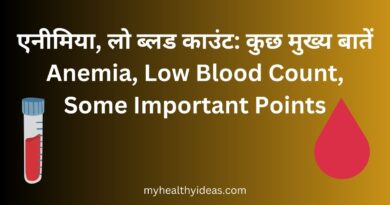विटामिन E | Vitamin E
Table of Contents
विटामिन E
विटामिन E कई रूपों में वसा में घुलनशील विटामिन है, लेकिन मानव शरीर द्वारा उपयोग किया जाने वाला एकमात्र अल्फा-टोकोफेरोल है, इसकी भूमिका एक एंटीऑक्सीडेंट के रूप में कार्य करना है।
विटामिन ई के कार्य
विटामिन E की खुराक लेने वाले व्यक्तियों में हृदय रोग के जोखिम में 20 से 40% की कमी आती है।
विटामिन E रक्त वाहिकाओं के अंदर रक्त के थक्के को कम करता है।
यह सिगरेट के धूम्रपान से होने वाले ऑक्सीडेटिव क्षति को कम करने में उपयोगी है।
यह हृदय रोग और मधुमेह में सुरक्षात्मक कार्य करता है।
यह मांसपेशियों के सामान्य कार्य के लिए आवश्यक है।
विटामिन ई किसमे पाया जाता है?
विटामिन ई पौधों पर आधारित तेलों, मेवों, बीजों, फलों और सब्जियों में पाया जाता है।
जैसे बादाम, गेहूं के बीज का तेल, कद्दू, सूरजमुखी, कुसुम, और सोयाबीन तेल, सरसों के बीज, आम, मूंगफली, मूंगफली का मक्खन, लाल शिमला मिर्च, चुकंदर व कोलार्ड साग, पालक आदि में विटामिन E उपलब्ध है।
इसे कृत्रिम रूप से भी तैयार किया जाता है।
Vitamin E
Vitamin E is a fat-soluble vitamin in many forms, but the only one used by the human body is alpha-tocopherol, its role being to act as an antioxidant.
Functions of Vitamin E
Individuals who take vitamin E supplements have a 20 to 40% reduction in their risk of heart disease.
Vitamin E reduces blood clotting inside blood vessels.
It is useful in reducing the oxidative damage caused by cigarette smoking.
It has a protective function in heart disease and diabetes.
It is essential for normal muscle function.
Where is Vitamin E found?
Vitamin E is found in plant-based oils, seeds, nuts, vegetables and fruits.
Vitamin E is available in such as almond, wheat germ oil, pumpkin, sunflower, safflower, and soybean oil, mustard seed, mango, peanut, peanut butter, red capsicum, beetroot and collard greens, spinach etc.
It is also prepared synthetically.
Disclaimer: This article provides general information only, to know more details always consult an expert/doctor. The author and this website (myhealthyideas.com) are not responsible for the information provided.



